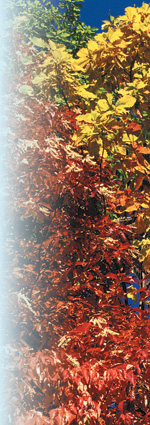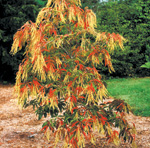Sourwood Brings Native Beauty to Landscapes
go.ncsu.edu/readext?236308
en Español / em Português
El inglés es el idioma de control de esta página. En la medida en que haya algún conflicto entre la traducción al inglés y la traducción, el inglés prevalece.
Al hacer clic en el enlace de traducción se activa un servicio de traducción gratuito para convertir la página al español. Al igual que con cualquier traducción por Internet, la conversión no es sensible al contexto y puede que no traduzca el texto en su significado original. NC State Extension no garantiza la exactitud del texto traducido. Por favor, tenga en cuenta que algunas aplicaciones y/o servicios pueden no funcionar como se espera cuando se traducen.
Português
Inglês é o idioma de controle desta página. Na medida que haja algum conflito entre o texto original em Inglês e a tradução, o Inglês prevalece.
Ao clicar no link de tradução, um serviço gratuito de tradução será ativado para converter a página para o Português. Como em qualquer tradução pela internet, a conversão não é sensivel ao contexto e pode não ocorrer a tradução para o significado orginal. O serviço de Extensão da Carolina do Norte (NC State Extension) não garante a exatidão do texto traduzido. Por favor, observe que algumas funções ou serviços podem não funcionar como esperado após a tradução.
English
English is the controlling language of this page. To the extent there is any conflict between the English text and the translation, English controls.
Clicking on the translation link activates a free translation service to convert the page to Spanish. As with any Internet translation, the conversion is not context-sensitive and may not translate the text to its original meaning. NC State Extension does not guarantee the accuracy of the translated text. Please note that some applications and/or services may not function as expected when translated.
Collapse ▲
Sourwood
Photo by Robert E. Lyons
Few native trees provide the ornamental landscape value as the sourwood,Oxydendrum arboreum. Panicles of lily-of-the-valley-type flowers followed by brilliant scarlet color in early fall make this tree a highly desirable landscape specimen.
Sourwood, also known as sorrel tree or lily-of-the-valley tree, is best known as an important source of honey for beekeepers. It is a small, undergrowth tree that grows throughout the Piedmont uplands and along Piedmont streams on well-drained lowland areas. The showy tree is commonly seen along highways and edges of hardwood forests of the Piedmont and the mountains.
Sourwood is among the latest of the trees to bloom each season, with white, bell-shaped flowers appearing from late June to August. The dense flower clusters resemble Japanese pieris, Pieris japonica, except the panicles of the sourwood are longer and more open. Maintaining this beautiful bloom in the fall against scarlet leaves makes it a spectacular landscape plant.
Planted in dense shade, the tree develops a slender trunk and small crown. Placed in the open landscape, it forms a short, often leaning trunk which divides into several stout, ascending limbs with an ornate appearance. As the tree matures, the bark becomes dense and cork-like, another design attribute.

Sourwood
Photo by Robert E. Lyons
Growth of the tree is somewhat slow and the tree is extremely difficult, almost impossible, to transplant from the wild. Your best bet is to locate a nursery that has them in containers. Sourwoods are native trees and may be difficult to locate, but the extra effort will be worth it.
The JC Raulston Arboretum (JCRA) is taking a look at the scarcity of cultivars that exist for this common native species which remains underrepresented in the home landscape. The JCRA views it as having great potential and welcomes the chance to examine new introductions that become available.
Darrell Blackwelder


